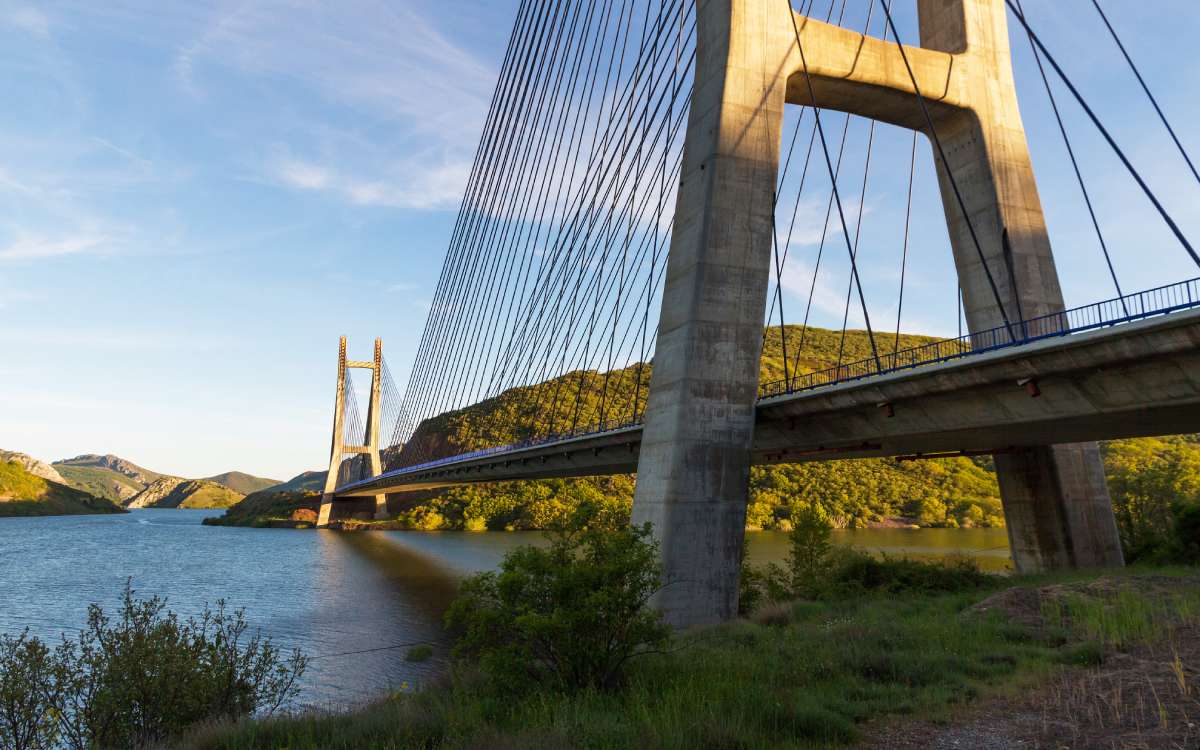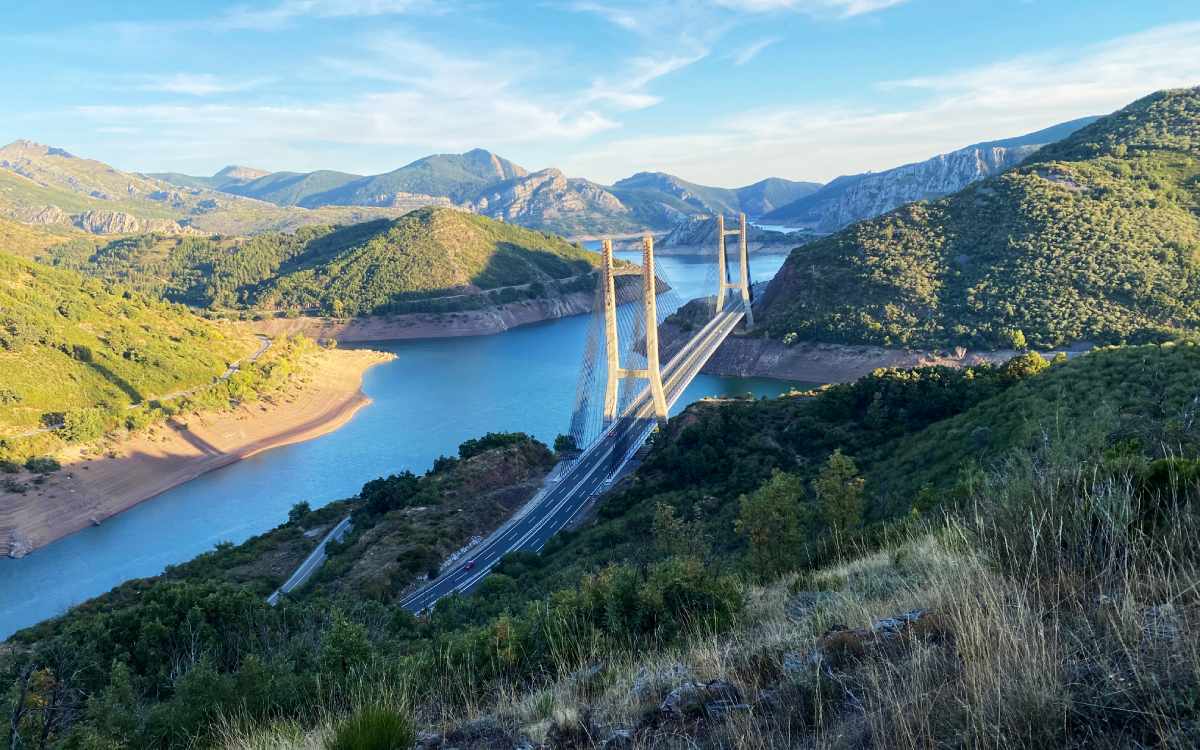
The Spanish region of Castilla y León preserves many gems of great historical and artistic value throughout its territory. Although its old heritage is an important source of pride, its more recent creations are equally breathtaking. That is the case with the ‘Spanish Golden Gate’.
On the road to Asturias lies one of the most fascinating bridges in the country. It might not be as famous as the one in the city of San Francisco, but its aesthetic and architectural elements resemble the original Golden Gate. Let’s discover the grandeur of this bridge located in the province of León. Crossing this bridge is a true visual experience that invites a moment of contemplation.

The ‘Spanish Golden Gate’. | Shutterstock
In the region of Castilla y León, crossing the Barrios de Luna reservoir in the province of León, sits the massive Ingeniero Carlos Fernández Casado Bridge. Its interesting name might suggest its creator’s name. And this name actually belongs to an engineer, but this isn’t his work. This bridge was designed by Javier Manterola, who wanted to honour Fernández Casado’s career.
This cable-stayed bridge sits on the Spanish Route 66, the Vía de la Plata, or AP-66, that links Sevilla to Gijón. It was inaugurated in 1983, so it has allowed people to reach Asturias for more than four decades.
At a certain point in time, it became the longest cable-stayed bridge in the world thanks to its length of 440 metres. However, Cádiz’s Puente de la Constitución de 1912, or de la Pepa, took its place in 2015. The latter is also the bridge with the largest intercolumniation in Spain and was designed by Manterola himself.

Base of the Ingeniero Carlos Fernández Casado Bridge. | Shutterstock
The construction of this bridge began in 1979 and finished four years later. It has two pylons that divide the deck into three intercolumnations, or spaces that run between the towers and don’t rest on any halfway support. These spaces cover 66 metres on each side, and the central area covers 440 metres in total, which earned it its distinction before Cádiz’s bridge was built.
This 643-metre-long, 22-metre-wide bridge is big enough to fit four traffic lanes. But that isn’t the most impressive fact about it: its two main towers, which resemble the famous American bridge, rise for more than 100 metres and include 220 cables between both sides.

The bridges’ cables. | Shutterstock
Each tower sits in completely opposite terrain. While the southern tower rises on a hard rock that can hold extremely heavy weights, the terrain in the north is softer. This made the execution of this project even more challenging.

The ‘Spanish Golden Gate’. | Shutterstock
Near this bridge are the tiny village of Barrios de Luna, a municipality nestled among the mountains, and the homonymous reservoir where this platform stands. Barely 300 people live there now, but this region enjoys a priceless historical value. The bridge is so close to the village that it is popularly known as the ‘bridge of Barrios de Luna’.
The bridge this article centres around and the nearby localities are interesting, but so is the reservoir that expands under it. It feeds on the waters of the Luna and Torrestío Rivers. Besides, its 80-metre-tall dam can hold more than 300 cubic metres of water.

Barrios de Luna reservoir. | Shutterstock
Another thing about Manterola’s work that catches the attention of everyone who crosses it is the lovely landscape it sits in. It’s the Valles de Omaña y Luna Biosphere Reserve, a natural area in northern León that is perfect to enjoy the fascinating nature. It covers more than 81,000 hectares. Many forests and valleys are scattered throughout this space, as well as many mountain ranges that link the Cantabrian Mountains to the ones of the Montes de León.
You can also read this article in Spanish here.
Follow us on Facebook!